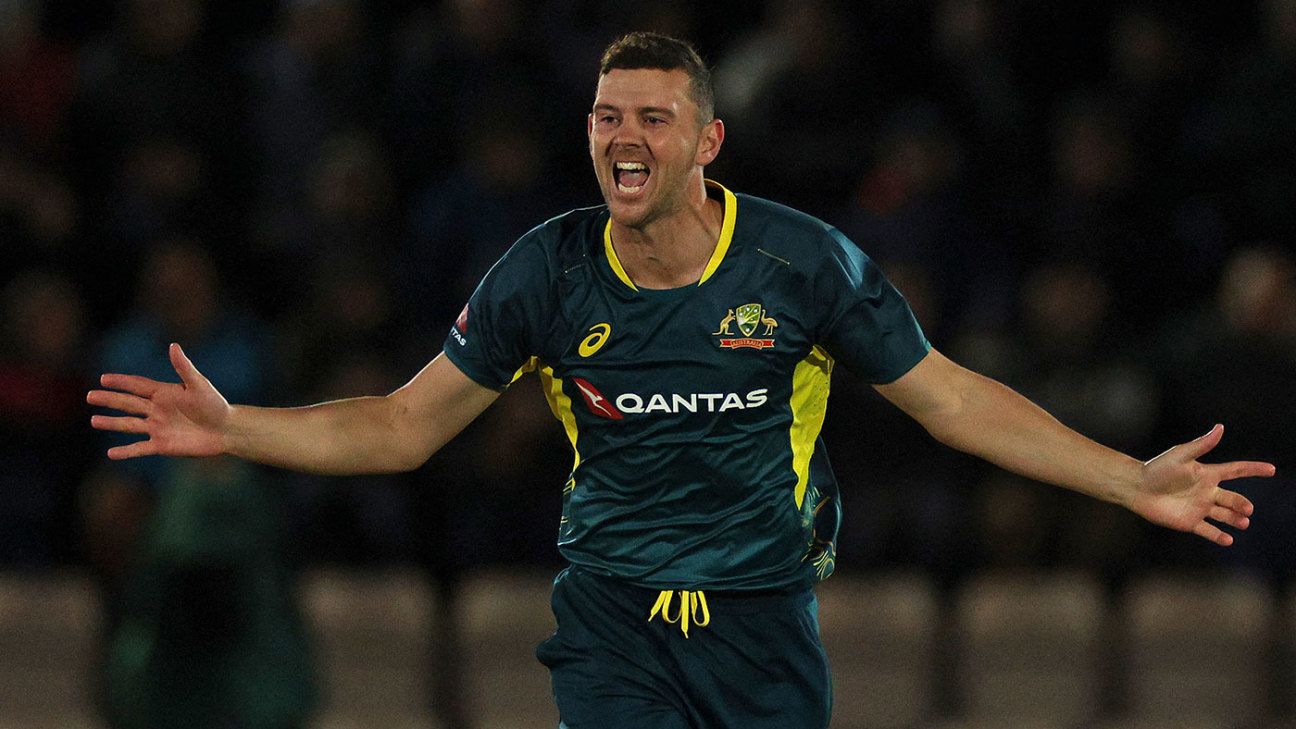Australia’s pace-bowling depth is often talked about, and for good reason, but right now it is being tested. The list of injuries and absentees around the limited-overs tour of the UK has become a lengthy one.
“A lot of our priorities will be geared around that,” Andrew McDonald, Australia’s coach, told SEN last week. “You’ll see that unfold with the management of our players. We’ll be very pointed around who does what in terms of [Sheffield] Shield cricket coming into the summer to make sure that they are ready for that first Test match.”
Starc will be part of the ODI series in England but will be carefully managed through the matches. Cummins has remained at home to work on strength and conditioning. It would be a surprise if Hazlewood played more than three of the one-dayers with the series taking place across just 11 days, although the washed out game in Manchester allowed for some extra downtime.
“There aren’t many breaks in the calendar unless you manufacture one,” Cummins said last month about missing the England tour. “The medical staff and coaches and everyone thought this is a good opportunity to have a month or so off bowling for my body, and then build up and hopefully be in as good a position as possible for the five Tests.”
The lengthy list of injuries around Australia’s pace bowlers is a reminder both of the incredible resilience of Cummins, Starc and more recently Hazlewood but also that it would not take much for best-laid plans to unravel. Aided by none of the Tests going five days last season, they played throughout against Pakistan, West Indies and New Zealand having also featured throughout the ODI World Cup, barring the one game Starc was rested for.
Cummins has missed just one Test through injury since 2018; the others have been due to Covid and compassionate leave. Starc missed three in a row against South Africa and India in early 2023 due to a finger injury and was left out of the first Ashes Test at Edgbaston, but has been almost as durable, often bowling through the pain of various injuries. Hazlewood, meanwhile, has emerged from a two-year period between 2021-2023 where he played just three Tests to keep himself on the park throughout except for being rested at Headingley in last year’s Ashes.
Even the first reserve, Boland, who boasts a home Test average of 12.21, had expected an opening to emerge somewhere last season. “I was expecting to play at some stage,” he told cricket.com.au. “The coaches and selectors were saying, ‘You’ll probably get a go at some stage, so be ready’.
“It’s hard, especially when my mindset is ‘It’s seven Tests, I’ll get a crack at some stage’. But [the big three] are just so resilient and they kept bowling teams out quickly, that they just don’t need that much of a break.”
At the moment, the injuries have been a disappointment for those involved in the England tour, and a juggling action for the selectors to fill the gaps, rather than an imminent concern for the India series, but that much-vaunted depth in Australia’s bowling stocks may yet facing a defining summer.
Andrew McGlashan is a deputy editor at ESPNcricinfo
